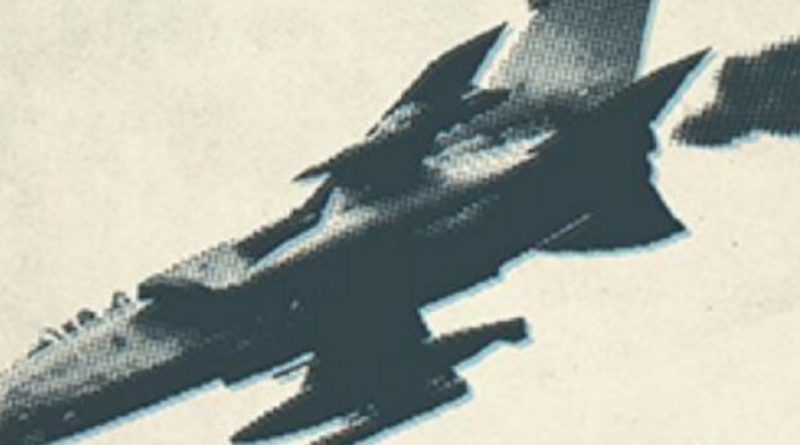Introduction to the Compendium of Arms Trade Corruption
This compendium collated by the World Peace Foundation details 36 cases of corruption in the international arms trade and broader military sector. It forms part of WPF’s ongoing program on the Global Arms Trade and Corruption.
The cases are also displayed on an interactive map, designed by Tufts GIS Data Lab.
The global arms business—especially the international arms trade, but also domestic military procurement—is widely seen as one of the areas of legal business that is most subject to corruption. Researcher and former oil industry executive Joe Roeber, in Parallel Markets (2005), estimated that 40% of corruption in international trade was related to the arms trade. This was based on a detailed survey of materials not in the public domain, relating to complaints of corrupt activities in international trade, to which he had access. Among recent works documenting the ubiquitous corruption that characterizes the arms business are Andrew Feinstein’s The Shadow World (2011), Nick Gilby’s Deception in High Places (2014), focusing on the UK, and Jean Guisnel’s Armes de Corruption Massive (2011), focusing on France.
There are several reasons why the arms trade is ‘hardwired for corruption’, as Roeber puts it. The high value of individual deals offer significant potential for personal enrichment, while at the same time are of critical importance for seller companies. The ‘national security exception’ throws a veil of secrecy around arms deals. The tendency for the military sector in many countries to be exempt from scrutiny by Parliament, civil society and investigative and judicial institutions. Finally, the status of the arms industry in producer countries as key instruments of state policy often afford them protection from the consequences of corrupt actions, or may even lead to governments condoning corruption as a means of securing deals.
Corruption in the arms trade does not just include diversion of public funds to elite decision-makers, officials and intermediaries, but can lead to unnecessary or ill-thought-out arms purchases and warp the contours of debates about security threats and the priorities for public funds. Broader corruption in the military sector can pose a serious threat to security. It can demoralize armed forces, who then become ineffective in combatting insurgent groups, or even prey upon the populations they are supposed to protect, as low-level officers and soldiers seek to share in the wealth being plundered by their superiors.
Corruption in the arms business can also seriously undermine democratic institutions in both buyer and seller countries. The rule of law becomes subservient to the political and financial interests of top leaders and officials, and to the interests of the military industrial complex in seller countries. More broadly, the close relationship between the arms industry, the military, ministries of defence, and politicians, can lead to acceptance of massive waste and overspending.
—————————
The cases
The cases below include both major and minor deals involving countries in Africa, Asia, Europe, and North & South America. Most of the cases involve the ‘typical’ pattern of corruption in the arms trade, whereby companies seeking to sell their weapons pay bribes to decision-makers in the recipient countries, via a network of agents and shell companies. But corruption in the military sector, as reflected in these cases, can take many forms, including bribes, embezzlement, fraud, conflicts of interest, circumvention of political finance laws, and many others. The information in the cases is from open sources, and relates to arms deals and other matters that have been the subject of official investigations.
The case entries were written up by Sam Perlo-Freeman and Xiaodon Liang, with advice and review from the rest of the World Peace Foundation team, and Paul Holden of Corruption Watch UK.
Format
Except for one of the cases, China’s crackdown on military corruption, which takes the form of an article, each of the cases are presented in the following form:
Introduction: Presenting a brief description of the case, and the main issues and alleged types of corruption involved.
Summary of key facts:
- Buyer country or countries
- Seller country or countries (or domestic procurement), and seller companies
- Year(s) order(s) signed
- Equipment sold
- Value of deal
- Sum involved in corruption allegations
Dramatis Personae – A list of some of the key players involved in the case. This list is not intended to imply that all those listed have acted corruptly; the fact that an arms deal involves corruption does not mean that all those involved in arranging the deal are also involved in the corrupt elements of the deal.
The deal: A description and timeline of the events involved in the arms deal or deals in question.
Corruption allegations: A summary of the main corruption allegations associated with the deal.
The investigation: A description and timeline of how corruption allegations were made known, and the efforts of investigating authorities in the buyer, seller, or third countries, to investigate the allegations.
Outcomes: Charges, legal proceedings, convictions and acquittals, sentences, and penalties for companies resulting from corruption investigations. This section will sometimes be combined with the previous section on investigations, or omitted where investigations are ongoing without any definitive outcomes to date.
Sources: The most important sources used, including in some cases further reading.
Tags: The entries are tagged with references to the countries and companies involved, and to the key themes to which the case relates, covering the means of corruption, and the purposes of the corruption.
